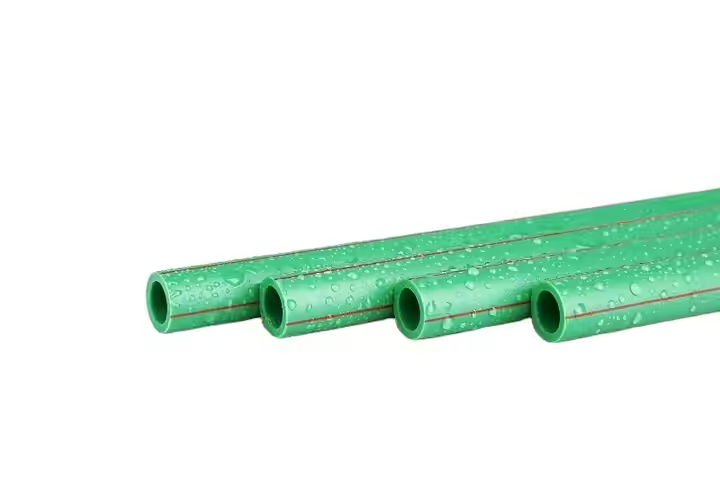Introduction
PPR (Polypropylene Random Copolymer) pipes DIN 8077/8078 and fittings widely used components in modern plumbing and piping systems. Made from a durable thermoplastic polymer, these products offer a variety of advantages that make them ideal for both residential and industrial applications. This article will provide an overview of PPR pipes and fittings, their characteristics, and their common uses.
What Are PPR Pipes?
PPR pipes are plastic piping systems made from polypropylene, specifically a random copolymer. They manufactured through an extrusion process, resulting in strong, lightweight pipes that resistant to corrosion, chemicals, and high temperatures. PPR pipes available in various diameters, typically ranging from 20 mm to 110 mm, and can be used for both hot and cold water applications.
Key Characteristics of PPR Pipes:
- Durability: PPR pipes designed to last for over 50 years, making them a long-lasting option for plumbing systems.
- Temperature Resistance: They can handle temperatures up to 95°C (203°F), allowing for safe use in hot water systems.
- Chemical Resistance: PPR pipe resist corrosion and are compatible with many chemicals, making them suitable for industrial applications.
- Non-Toxic: These pipes are safe for transporting potable water, as they do not leach harmful substances.
- Lightweight: PPR pipe are significantly lighter than metal pipes, making them easier to handle and install.
- Low Friction Loss: Their smooth interior surface ensures efficient fluid flow, minimizing pressure loss.
What Are PPR Fittings?
PPR fittings the connectors used to join PPR pipes together or to connect them to other types of plumbing systems. These fittings made from the same polypropylene material as PPR pipes and designed to create strong, leak-proof joints. Common types of PPR fittings include:
- Elbows: Used to change the direction of the pipe, typically available in 45° and 90° angles.
- Tees: Allow for the branching of pipes at a 90° angle, facilitating multiple connections.
- Couplings: Used to connect two lengths of pipe in a straight line.
- Reducers: Connect pipes of different diameters, allowing for a transition between sizes.
- End Caps: Used to close the end of a pipe or fitting.
- Adapters: Enable the connection of PPR pipes to other types of piping systems, such as metal or PVC.

Key Characteristics of PPR Fittings:
- Compatibility: Designed specifically for use with PPR pipe, ensuring a proper fit and effective sealing.
- Durability: Like PPR pipe, these fittings are resistant to corrosion and can withstand high pressures and temperatures.
- Ease of Installation: PPR fittings can be easily joined using heat fusion welding, creating strong, permanent connections without the need for adhesives.
- Non-Toxic: PPR fittings safe for use in drinking water systems, ensuring water quality is maintained.
Common Applications of PPR Pipes and Fittings
- Residential Plumbing: PPR pipe and fittings commonly used for hot and cold water supply in homes, offering durability and safety for domestic water transport.
- Commercial Buildings: Widely utilized in plumbing and heating systems for offices, hotels, and hospitals, where reliable performance is crucial.
- Industrial Applications: Used for fluid transport in industries that require chemical resistance, such as food processing, pharmaceuticals, and chemical manufacturing.
- Irrigation Systems: PPR pipe and fittings often employed in agricultural applications for efficient water management in irrigation systems.
- Fire Protection Systems: Due to their high-pressure resistance, PPR pipe and fittings used in fire fighting systems to ensure a reliable water supply during emergencies.
- Municipal Water Supply: PPR systems used in municipal applications for the transport of drinking water, providing safety and reliability.
Conclusion
PPR pipes and fittings are essential components in modern plumbing and fluid transport systems. Their durability, temperature and chemical resistance, and non-toxic nature make them an excellent choice for a wide range of applications. As the demand for efficient and safe water supply solutions continues to grow, PPR pipe and fittings are likely to remain a preferred option in various industries, from residential plumbing to industrial applications.


















